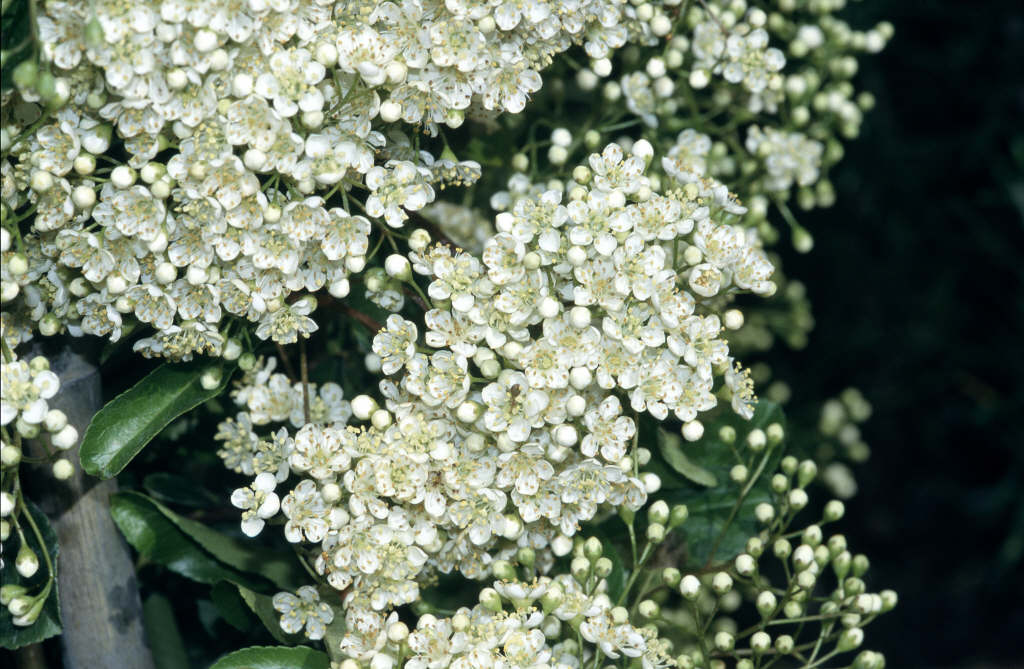Pyracantha 'Orange Glow'

firethorn 'Orange Glow'
A large, strong-growing, spiny evergreen shrub of upright habit, with oblong, glossy dark green leaves. Clusters of small, white flowers in early summer are followed by long-lasting, bright orange berries
Size
Ultimate height
1.5–2.5 metresTime to ultimate height
10–20 yearsUltimate spread
1.5–2.5 metresGrowing conditions
Moisture
Moist but well–drained, Well–drainedpH
Acid, Alkaline, NeutralColour & scent
| Stem | Flower | Foliage | Fruit | |
| Spring | Green | |||
|---|---|---|---|---|
| Summer | White | Green | ||
| Autumn | Green | Orange | ||
| Winter | Green |
Position
- Full sun
- Partial shade
Aspect
North–facing or West–facing or South–facing or East–facing
Exposure
Exposed or Sheltered Hardiness
H6Botanical details
- Family
- Rosaceae
- Native to GB / Ireland
- No
- Foliage
- Evergreen
- Habit
- Bushy
- Potentially harmful
- Fruit are ornamental - not to be eaten. Wear gloves and other protective equipment when handling. Pets: Fruit are ornamental - not to be eaten - see the HTA guide to potentially harmful plants for further information and useful contact numbers
- Genus
Pyracantha are evergreen shrubs or small trees, with spiny branches bearing simple leaves and corymbs of small white flowers followed by showy red, orange or yellow berries
- Name status
Accepted
How to grow
Cultivation
Easy to grow in fertile soil in sun or partial shade. Tolerant of pollution
Propagation
Propagate by semi-hardwood cuttings from late-spring onwards
Suggested planting locations and garden types
- Cottage and informal garden
- Wildlife gardens
- City and courtyard gardens
- Low Maintenance
- Hedging and screens
- Wall side borders
- Climber and wall shrubs
Pruning
Pests
May be susceptible to aphids, woolly aphid, caterpillars, brown scale and leaf-mining moths
Diseases
May be susceptible to pyracantha scab, honey fungus and fireblight
Get involved
The Royal Horticultural Society is the UK’s leading gardening charity. We aim to enrich everyone’s life through plants, and make the UK a greener and more beautiful place.
